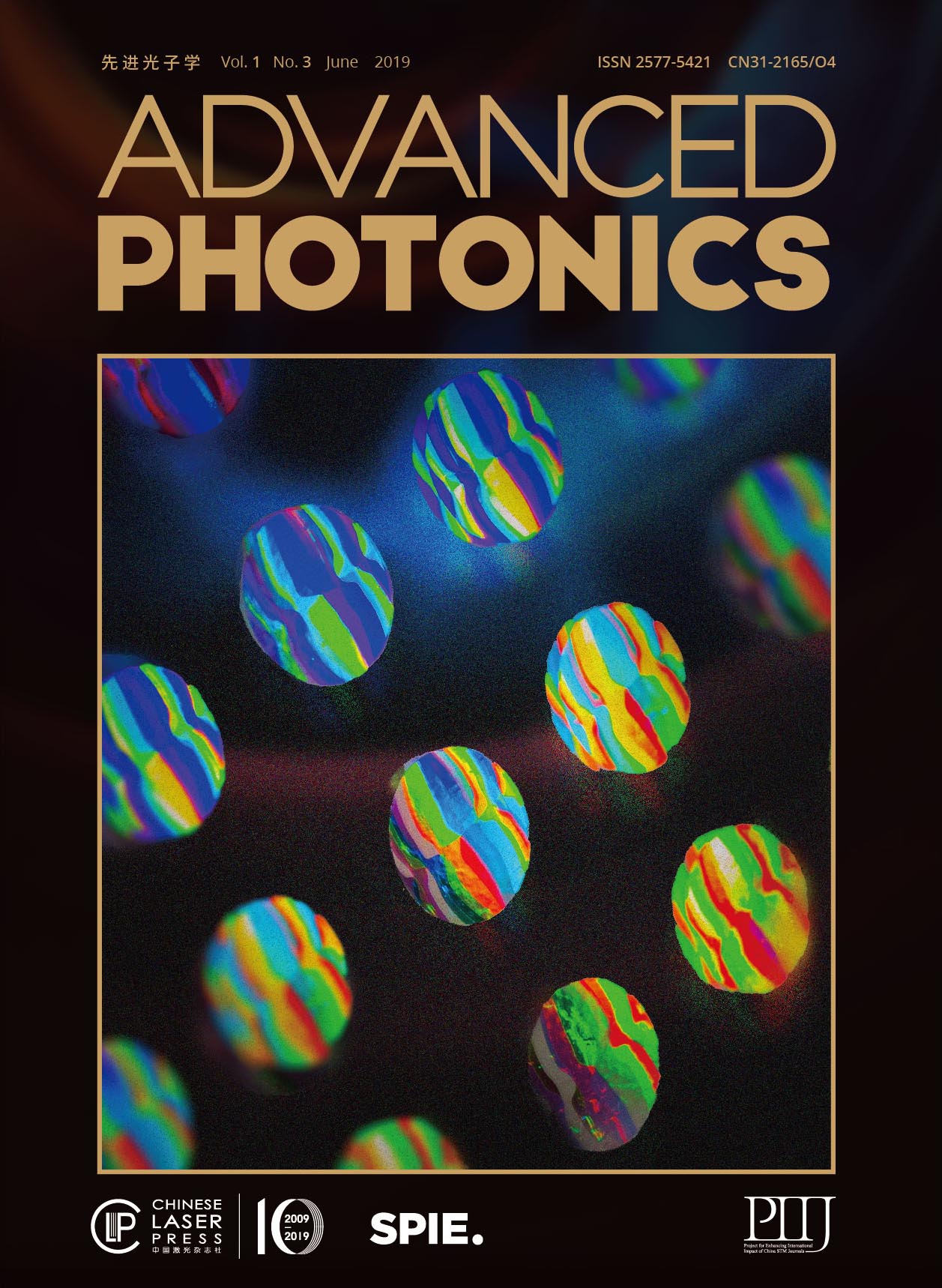 View fulltext
View fulltext
Metsurfaces continue to find an increasing number of applications. We provide a brief explanation of how metasurfaces can be used for three-dimensional imaging, as demonstrated by C. Jin et al in Advanced Photonics, Volume 1, Issue 3.
Integrating lithium niobate (LN) modulators with other functions on a single optical chip has proven difficult, until the development of thin film LN, which has enabled the development of silicon integrated photonic chips including LN modulators that can operate at very low voltage and at high speed. Recent progress on thin-film LN for high speed modulators is evaluated.
Boson sampling is a computational problem that has recently been proposed as a candidate to obtain an unequivocal quantum computational advantage. The problem consists in sampling from the output distribution of indistinguishable bosons in a linear interferometer. There is strong evidence that such an experiment is hard to classically simulate, but it is naturally solved by dedicated photonic quantum hardware, comprising single photons, linear evolution, and photodetection. This prospect has stimulated much effort resulting in the experimental implementation of progressively larger devices. We review recent advances in photonic boson sampling, describing both the technological improvements achieved and the future challenges. We also discuss recent proposals and implementations of variants of the original problem, theoretical issues occurring when imperfections are considered, and advances in the development of suitable techniques for validation of boson sampling experiments. We conclude by discussing the future application of photonic boson sampling devices beyond the original theoretical scope.
Ultrathin metasurfaces have shown the capability to influence all aspects of light propagation. This has made them promising options for replacing conventional bulky imaging optics while adding advantageous optical properties or functionalities. We demonstrate that such metasurfaces can also be applied for single-lens three-dimensional (3-D) imaging based on a specifically engineered point-spread function (PSF). Using Huygens’ metasurfaces with high transmission, we design and realize a phase mask that implements a rotating PSF for 3-D imaging. We experimentally characterize the properties of the realized double-helix PSF, finding that it can uniquely encode object distances within a wide range. Furthermore, we experimentally demonstrate wide-field depth retrieval within a 3-D scene, showing the suitability of metasurfaces to realize optics for 3-D imaging, using just a single camera and lens system.
The problem of imaging through thick scattering media is encountered in many disciplines of science, ranging from mesoscopic physics to astronomy. Photons become diffusive after propagating through a scattering medium with an optical thickness of over 10 times the scattering mean free path. As a result, no image but only noise-like patterns can be directly formed. We propose a hybrid neural network for computational imaging through such thick scattering media, demonstrating the reconstruction of image information from various targets hidden behind a white polystyrene slab of 3 mm in thickness or 13.4 times the scattering mean free path. We also demonstrate that the target image can be retrieved with acceptable quality from a very small fraction of its scattered pattern, suggesting that the speckle pattern produced in this way is highly redundant. This leads to a profound question of how the information of the target being encoded into the speckle is to be addressed in future studies.
We introduce a computational framework that incorporates multiple scattering for large-scale three-dimensional (3-D) particle localization using single-shot in-line holography. Traditional holographic techniques rely on single-scattering models that become inaccurate under high particle densities and large refractive index contrasts. Existing multiple scattering solvers become computationally prohibitive for large-scale problems, which comprise millions of voxels within the scattering volume. Our approach overcomes the computational bottleneck by slicewise computation of multiple scattering under an efficient recursive framework. In the forward model, each recursion estimates the next higher-order multiple scattered field among the object slices. In the inverse model, each order of scattering is recursively estimated by a nonlinear optimization procedure. This nonlinear inverse model is further supplemented by a sparsity promoting procedure that is particularly effective in localizing 3-D distributed particles. We show that our multiple-scattering model leads to significant improvement in the quality of 3-D localization compared to traditional methods based on single scattering approximation. Our experiments demonstrate robust inverse multiple scattering, allowing reconstruction of 100 million voxels from a single 1-megapixel hologram with a sparsity prior. The performance bound of our approach is quantified in simulation and validated experimentally. Our work promises utilization of multiple scattering for versatile large-scale applications.














